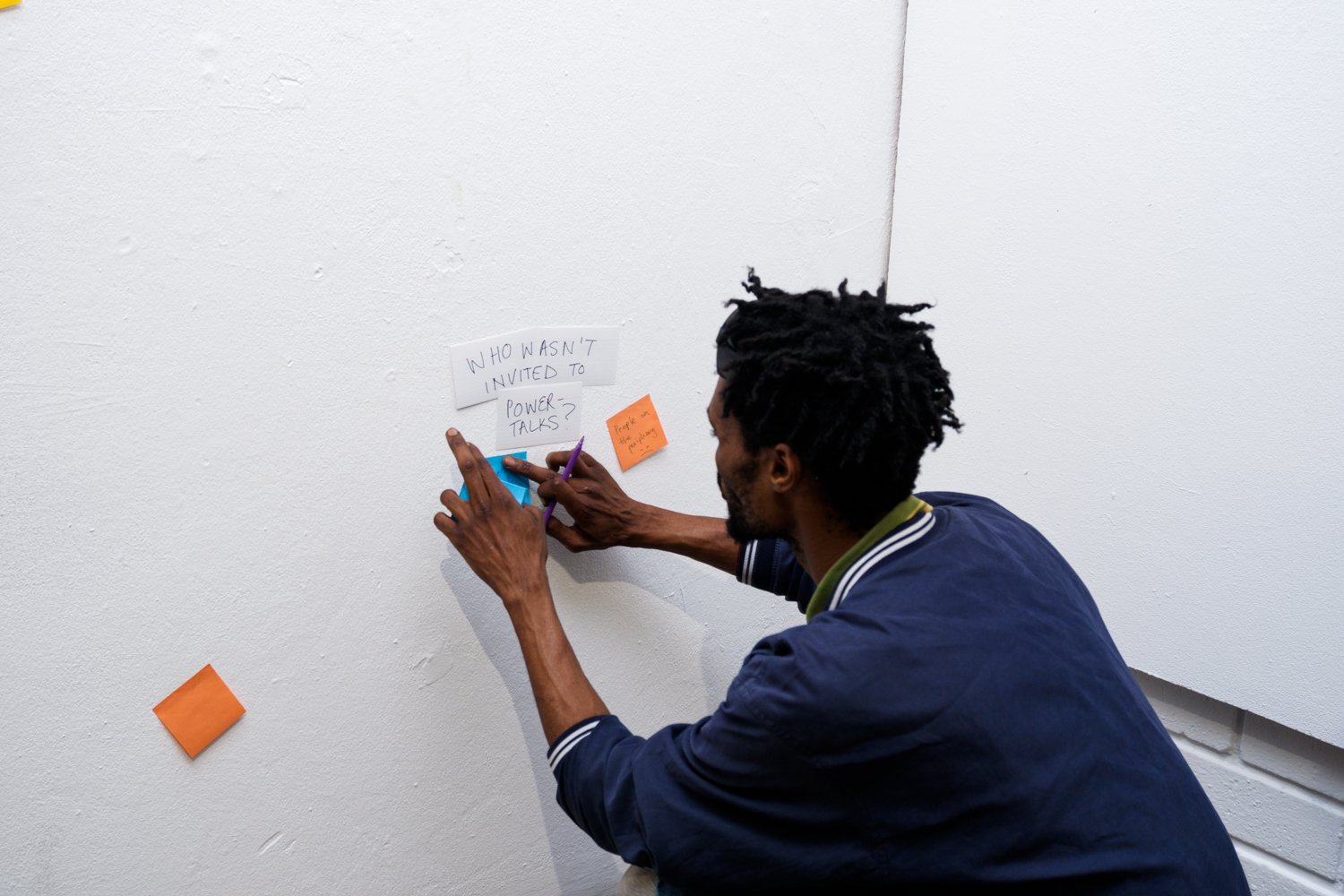The POWER Exhibition runs from the 5th to the 19th of August at Community ZA on 3 Millar Road in Durban. It is a spectacle that brings the curtain down on three days of talks supported by the Goethe Institut, regarding the state of the cultural economy in Durban. Niamh Walsh-Vorster, Director of the Contemporary Archive Project, co-curated the talks under the auspices of the African Centre for Cities, and produced the exhibition alongside Ashleigh Danielle Ruiters and Mary-Anne McAllister.
On a warm winter night off Umgeni Road, the POWER Party brought the youth of Durban’s cultural sector out into the industrial part of town where vendors and a Red Bull truck cordoned off the block. Among green and blue lights Meg Moore painted a mural of the POWER Talks pamphlet, blown up to fit the facade of the Community ZA building.

Photograph by Paulo Menezes

Photograph by Paulo Menezes
Upstairs the classic Kwaito outfit Alaska welcomed revellers with the “Ndofaya” instrumental spilling lavishly from the bar speakers of the Daily Dosage coffee shop. No one sipped morning brew as wine tokens were circulated and lubricated pockets of conversation across the room. Beyond the bar, the exhibition space housed a collage-making zone comprised of garden benches pushed against each other. Kids, teenagers and adults young and old sat and stood expressing themselves with scissors and glue.
Those interested in the art hanging on the walls turned right to the collage-station, where the selection curated by McAllister, Ruiters and Walsh-Vorster thematised the debates of the preceding three days. Artist’s response to POWER ranged from overt – such as Thobani K’s confrontational Killing Your Own Baby – to reflective, as seen in Thabiso Page’s Ubumina Bami.

Photograph by Paulo Menezes
Alka Dass drew from cultural narratives to address unprocessed trauma. Sinazo Gamedala challenged Eurocentric standards of beauty with Ntombikayise: a sculpture bearing the marks of fracture. Selloane Moeti tapped into her lineage as a Mosotho woman to explore femininity, identity and spiritual healing.
The curators challenged themselves to consider what had not been chosen to hang on the Community ZA walls. Which artists fell into the blindspots of institutional curatorial practice? It was discovered and acknowledged that the unseen include foreign nationals, queer artists, and those living with disabilities, among others. Sadly, their works are not only omitted here but across the gallery walls lining the country. It is imperative, therefore, to interrogate the curation process in aid of inclusivity and representation.

Photograph by Paulo Menezes

Photograh by Lindokuhle Ndlovu
POWER Party guests weighed in with insights of their own as space was provided on blank walls to respond to questions such as, “What is POWER?” and “Where do we go from here?”. Notable responses on post-it notes included: “POWER is not having to code-switch,” “POWER is money,” and, “From here we go to the liquor store.” Play was encouraged by a yellow backdrop between Moeti and Thobani K’s exhibits, which served as a photo booth for attendees to include themselves in the exhibition.
The night concluded with a spiritual performance by the musician Mike Makhosini, but it is the hope of the curators that guests will continue the conversations initiated by the talks programme beyond Durban’s immediate future. As a city reeling from the devastation of recent protests and floods, cooperation among the Durban creative sector could go some way toward lifting morale.
To join the conversation and perhaps catch up on some of the themes discussed during the talks, pop into Community ZA on 3 Millar Road where the POWER Exhibition will be up until this Friday 19 August in Durban.

Photograh by Lindokuhle Ndlovu



















































